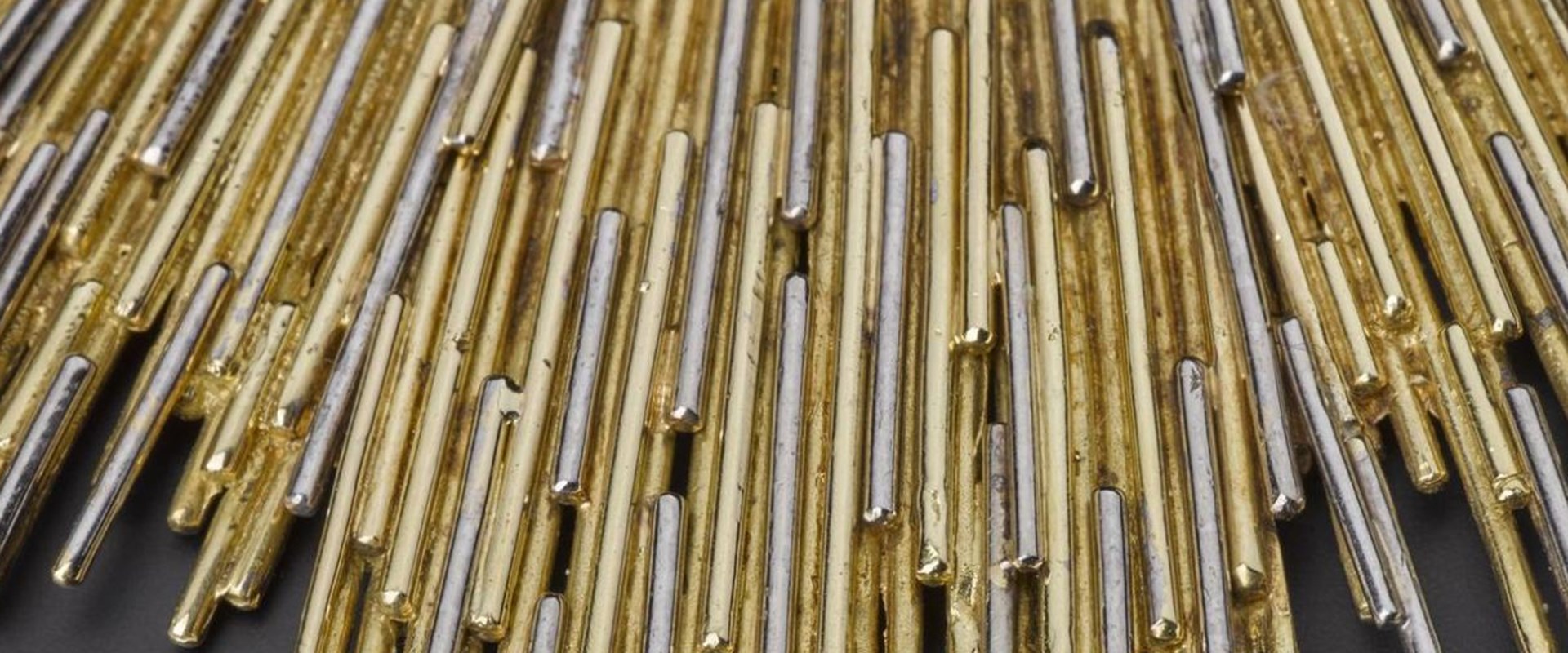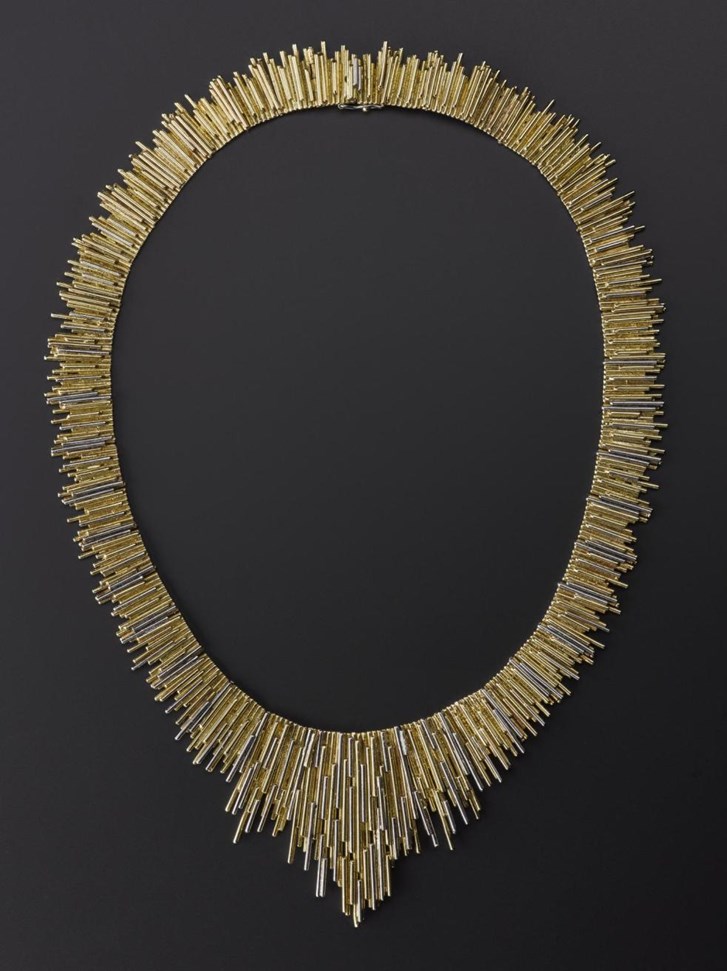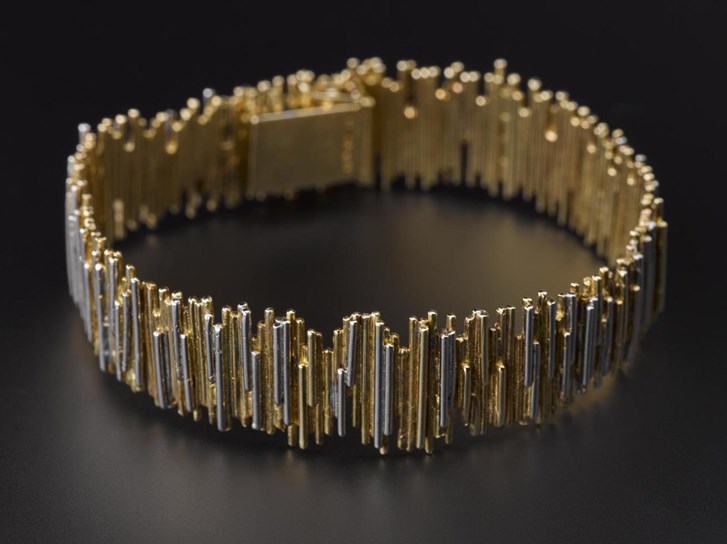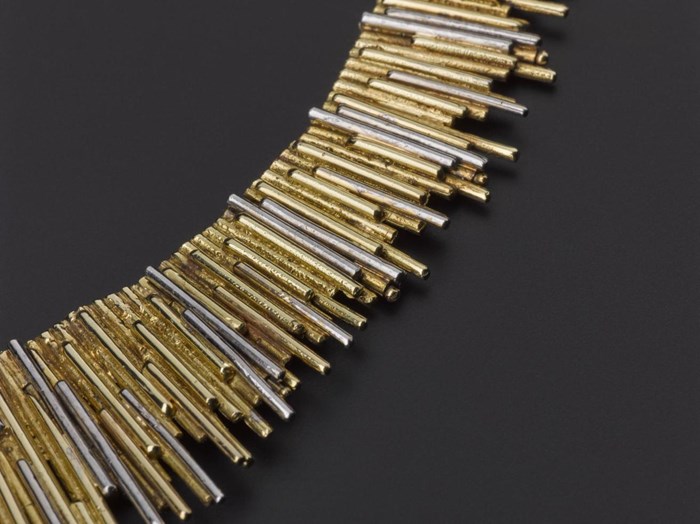Key in a search term below to search our website.
Key in a search term below to search our website.

Charles de Temple was a pioneer in the method of melting and transforming gold into abstract forms embracing shape and texture.

Necklace by Charles de Temple, London, England, c 1969-75, Gold.
This necklace and bracelet are from a series he called ‘nervous jewels’ - prickly sculptural constructions created from two coloured gold wire.

Bracelet by Charles de Temple, London, England, c 1969-75, Gold.
Date
c 1969-75
Designed by
Charles de Temple
Made from
18ct Gold
Made in
London, England
American born, London based jeweller, Charles De Temple (born 1929) was highly influential during the 1960s and 70s.
Inspired by nature and abstract modernist art, De Temple challenged traditional preconceptions of how jewellery should look. He favoured abstract, unique pieces, designed for the modern woman.

Detail of necklace, by Charles de Temple, London, England, c 1969-75, Gold.
The Modernist jewellery movement took longer to develop in Britain. Post-war recovery was slow. A tax on luxury goods and limited access to raw materials meant that production focussed on traditional pieces for the export market. It was almost a decade later before British designers embraced the simplicity of the new movement.
It wasn’t until the early 1960s that a prominent British Modernist style emerged from the jewellery studios of London. Designers such as Andrew Grima, Charles De Temple, John Donald and David Thomas pioneered methods of melting and transforming gold and other precious metals into abstract forms which embraced both shape and texture. Inspired by natural forms, they also drew on the artistic trends in Brutalist architecture and abstract modernist art, as well as popular culture.
Header image: Detail of necklace, by Charles de Temple, London, England, c 1969-75, Gold.